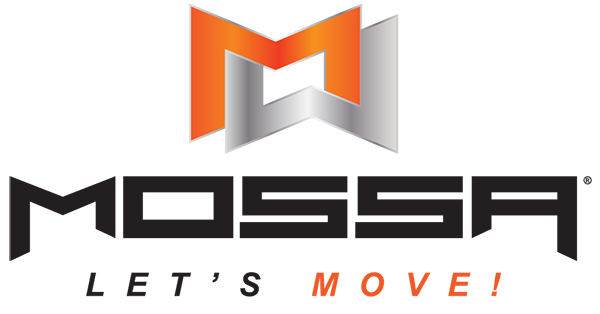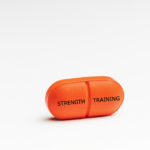Variability, Variety, and the Four Big Buckets
Cross-Training usually has technical connotations when it comes to exercise. It is a technique used by athletes to engage in alternative sports or varying types of exercise in order to improve fitness or performance in their main sport. Participating in well-rounded, diverse training has multiple benefits, most notably, improved performance and less chances of overuse injury. But creating a well-balanced exercise program isn’t just simply mixing up cardio, strength, and mobility training each week. It takes a smarter, more thoughtful and intentional approach.
At MOSSA we encourage a similar idea – let’s call it “cross-programming” because, let’s face it, not all of us are training to become elite athletes. You might be exercising to be healthy and fit, to be more active in life or in a new sport or hobby, or you might be a weekend warrior training for your first triathlon.
Either way, we strongly encourage everyone to “cross-program.” Now don’t let me get started on the wrong foot – if you love Group Power and do Group Power two or three times a week, by all means, don’t stop. In building each workout, we ensure that Group Power, in fact all MOSSA programs, have enough “baked in” variety that you are already getting a good bit of diversity in your workouts.
As a general rule, variety is great. In fact, our bodies LOVE variety. In technical speak we call this principle “variability”. Variability is exercising and moving in different ways in order to build well-rounded, resilient, ready-for-anything bodies. Here is a good way to assess if you have enough “variability” in your workout life.
IoM, the Institute of Motion has broken these different types of mechanical loading into four big buckets.
Bucket One: Unloaded Linear Training
The first bucket is unloaded linear training, where we are moving in one direction or one plane of motion, without an external weight of any sort. Think of running or walking. This category of work might be used for relative strength and stability training, such as bodyweight movements that all move in a single plane of motion, such as traditional squats or pushups (bodyweight only). Now of course we have components of this in most MOSSA programs; while we can’t run far distances, we still do run, and we use The STEP on occasion in a linear way. And if you’ve ever tried Active, Blast, Fight, or Power, you know we do plenty of unloaded (bodyweight) squats and pushups – that’s for sure!
Bucket Two: Unloaded Three-Dimensional Training
The next bucket is still unloaded (without an external load), but it involves moving in multiple directions or planes of motion. This includes all kinds of sports like soccer and basketball, as well as dancing and martial arts. You might think of this as “three-dimensional” training because the body is moving in multiple directions, not just “front to back” like running. The benefits of three-dimensional training are that it conditions the nervous system, improves dynamic stability, and enhances speed, agility and quickness. Unloaded three-dimensional training is at the heart of our programs Group Centergy, Group Fight, and Group Groove.
Bucket Three: Loaded Linear Training
The third bucket is when we carry an external load, like a barbell or dumbbells but we only move them in a linear fashion. This encompasses most traditional strength training, along with indoor cycling (the external load comes from resistance on the wheel). We might use this category to train for maximal strength, muscle hypertrophy (increase in muscular growth), and for increases in the hormones that build muscle. Group Power, our strength training program spends a good amount of time in this area, especially when we do classic strength training movements like squats, lunges, deadlifts, bicep curls, and overhead presses.
Bucket Four: Loaded Movement Training
Finally, the fourth bucket, the bucket most often left behind when it comes to exercise, is three-dimensional movements that use an external load. The technical name for this type of training is “Loaded Movement Training,” a phrase coined by Michol Dalcourt at IoM. Loaded Movement Training, which can be thought of as chore-based movement patterns with a load, offers several benefits, including improvement in multi-directional stability and strength, and major improvements in muscular coordination. This type of training has less compressive forces because the load is distributed across many joints rather than just loading one joint repetitively. At MOSSA, we use a ViPR Pro, weight plates, and even dumbbells to perform Loaded Movement Training. For example, when we use the plate in Group Core, you are doing Loaded Movement Training.
Cross-Programming = Cross-Training
You can see that each type of training has its own pros and cons. The win-win of cross-training (and “cross-programming”) is that you can draw from the benefits of different types of training while avoiding the cons that may occur when someone only does one, single type of training. Building variety into your weekly workout types, ensuring that you are pulling from each bucket, also means that you are reducing how much “repetitive” wear and tear you are placing on the tissues and the joints.
Let’s play out some scenarios to illustrate this point. If you are an avid runner who is always training in the straightforward (sagittal) plane of motion, then it would do you a world of good to find some kind of exercise that gets you moving in many different directions. We recommend you try a Group Fight or Group Groove workout or add some Group Centergy into your life in place of one of your runs. Your body and joints will love you for it because you’ll be moving them through their full range of motion, rather than in a smaller (running only) range of motion repetitively.
Maybe you are a Group Fight fanatic. While there is always some good quality bodyweight strength training in Group Fight, your body will also love the benefits of training with an external load (found in 3D30, Group Active, Group Core, Group Power). This will strengthen and fortify your joints as well as give your strength building hormones a bit of a boost! Importantly, this is one of the best ways to build bone density.
Finally, if you have always loved to do traditional strength training, and then you go for a run for your cardio, how about choosing something that has you stepping outside of the box (and into another bucket)? Your coordination will be challenged, and your Movement Health will improve when you move in a multi-dimensional way. Remember, moving in a variety of planes and ranges of motions is more closely connected to real life biomechanics – which translates into real life benefits.
We’ve Got Your Cross-Training Covered
Good news. At MOSSA, we deem this kind of cross-training so important, that we include all four buckets in all of our MOSSA programs. (We are limited in programs that do not include an external load. But, yes! We’ve even got some three-dimensional movement in our cycling programs … off the bike of course!). Training in all four buckets ensures that you’re not only getting a great bang for your time buck, but that you’ll become a better mover, be more resilient, and feel better in your body.



 More than Muscles: Benefits of Strength Training
More than Muscles: Benefits of Strength Training New Member Onboarding: Over-Welcoming or Overwhelming?
New Member Onboarding: Over-Welcoming or Overwhelming? Team vs. Technology and the Future of Fitness
Team vs. Technology and the Future of Fitness Setting Goals for Group Fitness
Setting Goals for Group Fitness Does Exercise Have to be Boring and Bitter?
Does Exercise Have to be Boring and Bitter?